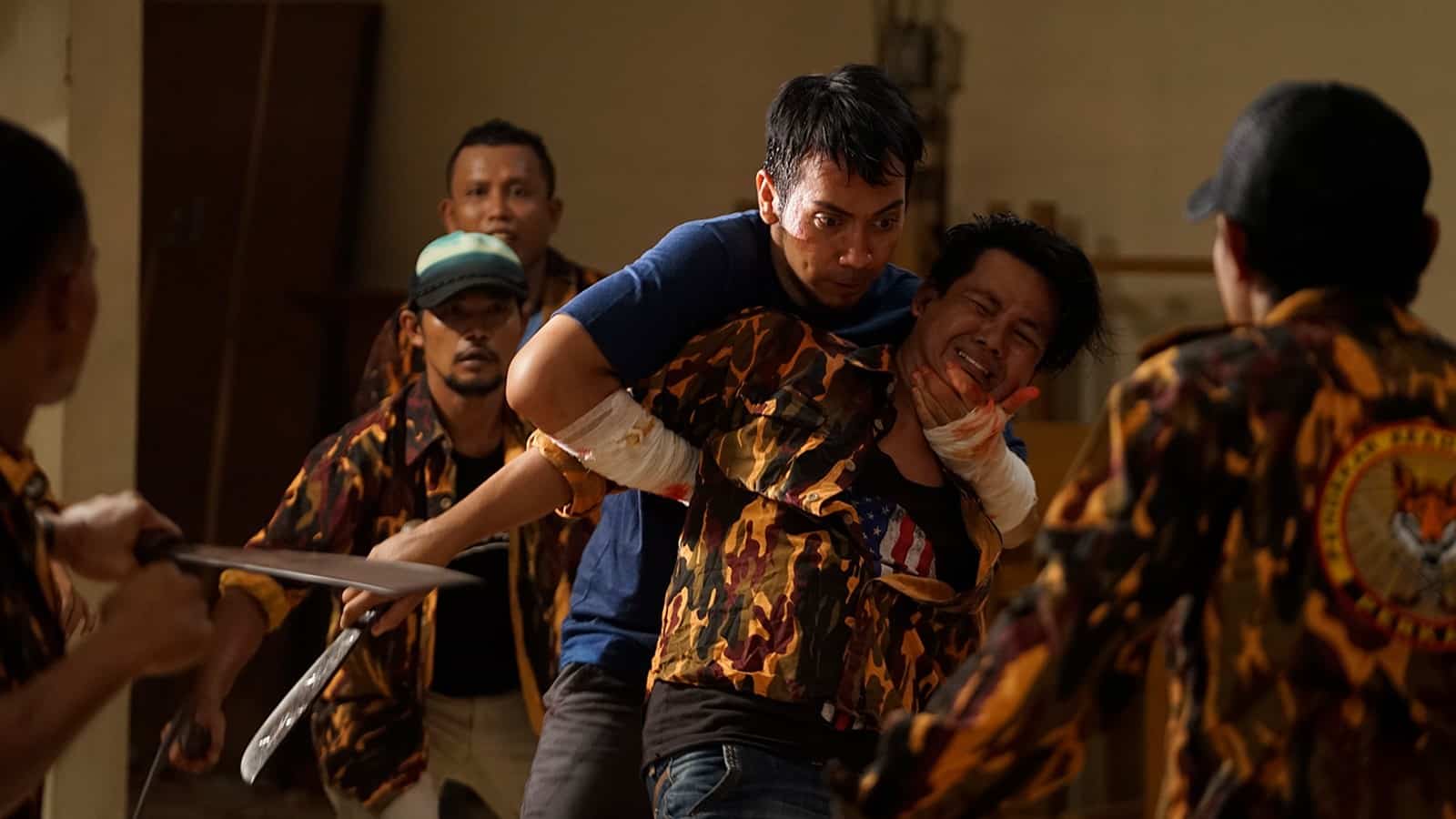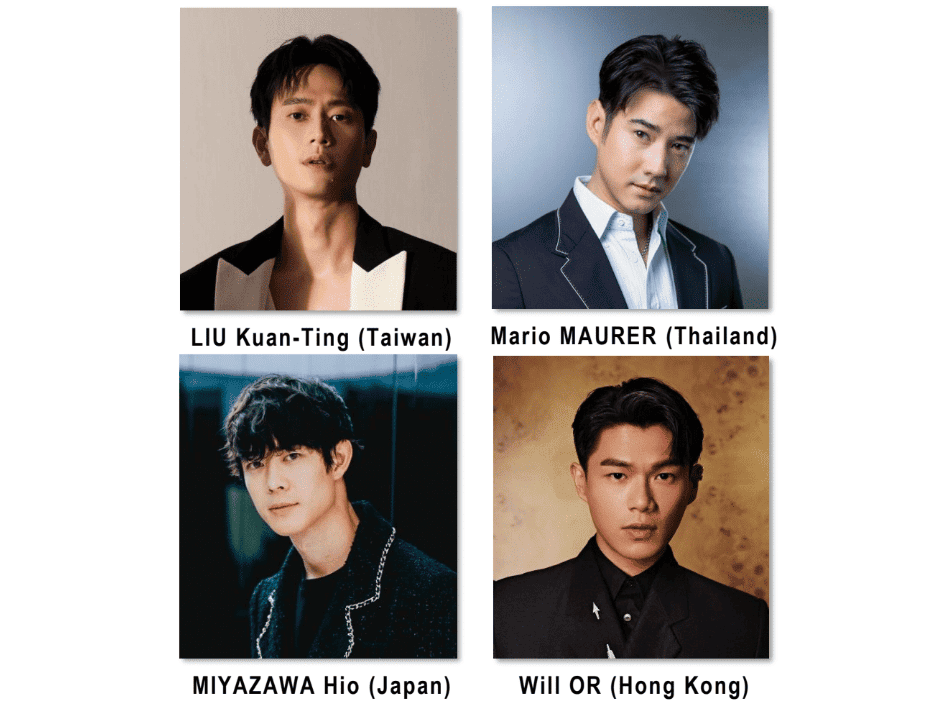As the eldest of three children, Randolph's earliest venture into storytelling was mainly telling bedtime stories to his younger siblings with the help of G.I. Joe action figures as his cast. Born and raised in Indonesia, Randolph came the States after he finished high school. He earned two degrees in both Philosophy and Film Theory from the University of Hartford, Connecticut. He worked at an arts consultancy company for about three years thereafter, creating a diverse range of film and video projects, including live event coverage, commercials, a children book accompaniment film, as well as a live theatrical production. Randolph recently completed his MFA degree in film and television production at USC School of Cinematic Arts, where he focuses on directing, writing and sound design. He hopes to keep telling bedtime stories to an audience larger than his siblings. “Preman” is his feature debut.
We speak with him about the inspiration for the film, having a deaf-mute protagonist, his own relationship with his father, corruption in Indonesia, the concept of premen, the casting, the visual approach of the movie, and other topics.
What was your inspiration behind shooting the film?
There were many sources of inspiration behind “Preman”, the majority of which originated from my own experiences growing up in Indonesia. How things are and how they came to be often don't make sense on the surface. Telling this story, hence, was an emotional catharsis for me. It was my attempt to make sense of the injustices and abuse of power I witnessed firsthand at an early age.
Having said that, perhaps my biggest inspiration was my own relationship with my father. He is the type of person who always tried to shield his family from the harsh realities of his environment. This tendency led to some cognitive dissonance in the way he inadvertently created a sort of “glass wall” between his family and himself. But such compartmentalization cannot be sustained forever as, sooner or later, life will flow over that barrier and sweep us away. Only then do we realize that being in the same boat, we can't always hide the truth from one another, no matter how good the intention.
And so, “Preman” is essentially a story about a father and a son and the urgent necessity to break the glass wall that separates them.
Why did you choose a deaf-mute protagonist?
The unfortunate reality of being deaf in Indonesia is that you are quite severely marginalized. From having your preferred sign-language not acknowledged by the government to the lack of access to unified sign-language learning leads to many in the deaf community being forced to read lips. Such disadvantages are reflected in our protagonist who is isolated and feels out of place in his surroundings. His deafness contributes to him creating this barrier between his son and himself; a barrier that reflects his past trauma, his inner conflict with what he does for a living, and the act of turning a “deaf ear” towards his own conscience. And lastly, I wanted to create an antihero defined not by his words, but by his actions (and, specifically at the onset of the story, defined by his inaction).
One of the main themes in the movie is corruption. How serious is the issue in Indonesia?
To say the issue is serious would be an understatement. Indonesia has a long history of corruption, dating back from the colonial era to the New Order era under its dictator. To put it bluntly, corruption is not only prevalent, but also the norm. It is so ingrained within the foundation that if you take corruption out of the equation, the entire country will fall into chaos. Such bitter irony is attributed to an imperfect system with a lot of holes that people with means and power can easily capitalize on. It has created a situation that makes it near impossible for most to live without encountering instances of corruption in their daily lives.
Have you had any personal experiences?
As a matter of fact, a crisis that had befallen my father became a direct catalyst for me to write the script for “Preman”. My family is fortunate enough to have survived this experience. There are countless others less fortunate. I tried to make sense of such an experience in the story of “Preman”. After all, a preman is a bully. And sadly, bullies don't disappear just because we grow up. They exist in our homes, at work, on school grounds, and anywhere else people exert unjust powers over others.
Growing up, my father was always a stranger to me. But ironically, it was through this injustice that we truly got to know each other. “Preman” is also about a father and son's journey to overcome bullying and bond with one another amidst grave injustice. We all know a preman or two in our lives – we might even be one ourselves at times. But like all forms of abuse, we have the choice to either let it define us or break the cycle.
Can you tell us a bit more about the whole concept of premen?
In the 1800s, during the Dutch East Indies' occupation in Indonesia, local thugs and criminals were employed by the colony to enforce control over Indonesian slaves. These men were bestowed the title vrijman (free man). The natives mispronounced the label as preman. Though the word “free” gave these criminals the illusion of superiority and being freed from slavery, such was not the case. Drunk on power, they still served the oppressors by oppressing their own people.
The colonial era might be a thing of the past, but premanism still exists today. From street-level criminals to large organized-crime syndicates and NGOs, premanism permeates all facets of Indonesian life. There is, however, a certain masculine allure of being a preman; of being a self-proclaimed “social justice warrior.” Of being a badass. It is, after all, the equivalent of an “Indonesian gangster.” Feared and respected in equal measure, they're sometimes even seen as heroic. But the truth is, their view of justice is skewed. This is because a preman sees himself at the top of the food chain, preying on the weak by asserting his dominance. In a nutshell, a preman is a bully.

Tell us a bit more about the Barber. How did you come up with such a unique character and how was your cooperation with Revaldo for the role?
The Barber was a particularly challenging character to construct. He was designed to be the mirror image of our protagonist. Whereas Sandi deals with the marginalization of being disabled, Ramon deals with even harsher prejudice due to his sexuality. Both share a parallel history of being victims of bullying, and both end up being bullies themselves. However, whereas Sandi reluctantly became one out of fear, Ramon embraced it as a natural order of things: eat or be eaten. Where Sandi joined a group of bullies (the preman gang), Ramon fought back – hard, being an independent agent of his own. The Barber is a complicated character with many layers of paradoxical qualities. He hides his true self behind the theatricality of his “persona” (hence always referring to himself in the third person) to protect his vulnerable self. He is comfortable with his sexuality, though he doesn't feel the need to always announce it. He is a charming gentleman, and at the same time incapable of intimacy. He is a “complete” individual on his own terms of psychological fulfilment. And lastly, he is a cold-blooded killer, yet capable of empathizing with our protagonist.
In almost all Indonesian films, when there is a gay male character, the tendency is to present them in a very over-the-top, effeminate, lustful, and offensive fashion. They are either a parody or the go-to butt of jokes. This was why finding the right actor to play Ramon was so challenging, as most who auditioned for the role had strong preconceptions of how a gay character is portrayed. That is, until Revaldo walked in. He asked in-depth questions about the character, and not only understood, but deeply empathized with him. He blew everyone out of the water with his charismatic audition, and he made the character his own. It was nothing short of a treat to be collaborating with Revaldo on this movie. He always showed up on time, put in countless hours in both stunt and performance rehearsals, and he invested so much of himself into what became the Barber.
In general, how was your casting process for the film?
Khiva Iskak was the first one cast in the project, since I wrote the lead role for him. He and I made a short film together several years prior. I really enjoyed working with him and felt that he was one of the most underrated actors in the industry.
Aside from Khiva, we knew that this would be a challenging movie to cast. We had neither the budget nor the network to approach potential actors. That is, until my good friend Paul Agusta joined the project. Paul is an excellent writer/director who has been working in Indonesia for years. Like myself, Paul studied film in the US, and when he started here, he faced similar obstacles. He not only empathized with my situation but was also generous enough to come onboard the project as a casting director (his first time doing so).
From the get-go, we both agreed that we were not in a position to approach the big stars. Not only could we not afford them, but it was also very unlikely they would want to work with a first-time feature director. Instead, we opted to go for lesser known, yet serious and dedicated, actors, many of whom were veteran stage performers. It was quite serendipitous that Paul himself is an actor and acting teacher. So, he introduced me to his colleagues and the students of his acting workshop, many of whom ended up being cast in the movie. They were all passionate artists who didn't mind working way below their usual rates after reading the script and having Paul vouch for me. Paul and I oversaw each of the auditions ourselves.
When delving into the characters, I told members of the cast the same thing: treat me like a tailor. Here I have written this character that is so much of me, but it is neither complete, nor is it a one-size-fits-all. You are the one who must embody it and bring it to life. So, you must meet me in the middle, imbue this character with as much of yourself as possible, and I will custom fit it for you. This approach proved to be fruitful in terms of collaboration and building the actor-director trust, as most of the cast utilized their freedom to the fullest, delivering much more heart and soul than what was on paper.
The nightmares Sandi has are quite differently shot than the rest of the movie. Why did you choose this approach in that part?
Aside from the bullying and animal food chain analogy, “Preman” also adheres to a specific color design. In this case, I used a classic comic book style trichromatic primary color scheme. The three main characters are always represented by their colors: the yellow protagonist (Sandi), the red antagonist (Guru), and the blue protagonist's conscience (Pandu, Mayang, Lukas). The supporting characters encompass these three with their own secondary colors: the green that is the protagonist's twisted mirror image (the Barber), the overwhelming orange of the gang (the premans), and the apathetic purple police (the Komandan). These characters' colors gradually change according to their respective arcs.
In contrast to the “colorful” reality of the “Preman” world, I aimed to have the nightmares be distinct enough in its lack of them. To achieve such an effect, my cinematographer, Xing-Mai Deng, suggested we try for a bleach bypass look. With such a desaturated and high contrast feel, we were able to visually separate Sandi's haunting past from the present, until their culmination in the movie's climax, where we see everything as simultaneously devoid of, and explosively, colorful.

In general, how was your cooperation with DP Deng Xing-Mai and what was your purpose in the visual aspect of the movie?
Xing-Mai and I have been close friends since our days as graduate students at the USC School of Cinematic Arts. We made a pact back in the day that he would shoot my debut feature. And since we worked together on many projects before, we had developed a common understanding that made it a lot smoother to plan and prepare for “Preman”.
It was great to have Xing-Mai on set. Not only is he an incredibly hardworking visual artist, but he also has an encyclopedic knowledge of all aspects of cinematography. When Xing- Mai is on set, you can bet you're in good hands. Since Xing-Mai had never been to Indonesia before, we were slightly concerned about the potential working culture clash and language barrier. But that proved to not be the case, as not only did he communicate extremely well with the ACs, gaffers, and grips, but they also adored him.
Regarding the visual aspects of the movie, both Xing-Mai and I made the visual storytelling a priority, which is why we charted all the story beats and emotional intensity levels of each scene. I also wanted to juxtapose the desaturated harshness of the urban environment and its inhabitants' colors popping out, hence the chromatic design representing the characters' alliances and arcs (especially in the case of Sandi and Guru).
Can you give us some details about the locations the film was shot?
The entirety of “Preman” (in both story and principal photography) takes place in the outskirts of Jakarta. Early during development and preproduction, I personally scouted the locations myself. This helped me get a better feel for the world of the story. Most of the sets were in Bekasi, with key locations such as the school in Cibarusah.
Mayang's house was probably the most challenging location. Due to extreme restrictions in budget and schedule, our production designer (Asep Suryaman) had to work his magic, constructing a fully livable cabin within days. One night, in the middle of a shoot, there was a thunderstorm, followed by a flash flood. The whole set was immediately submerged in waist-high water. We waited for the storm to pass, then proceeded to dry the entire house and resume filming until sunrise.

What is your opinion of Indonesian cinema at the moment?
Being away from Indonesia for almost two decades and then returning and plunging right into its film industry has given me a fascinating outlook. The most popular genres here are still folklore horror and teenage melodramas that usually follow more rigid formulas. It can be a double-edged sword in that it's a proven marketing strategy, but at the same time can be restrictive in that the target audience is skewed heavily and exclusively towards the domestic market. It used to be the case that thought-provoking movies were met with a lot more indifference or simply shunned. Actors are often cast based on social media followers rather than their acting backgrounds. This was the status quo, and in many cases still holds true. But lately, it seems that audiences are more open to films that take risks outside of the usual models. Directors that break the mold are gradually getting more support. The way I see it, Indonesian cinema is currently on an upward trajectory in terms of quality and variety. I have confidence and high hopes that we will be seeing more and more captivating films coming out of this country.
Are you working on anything new at the moment?
I've been writing a lot lately for a variety of projects, including a TV series and a VR narrative. A video game where I served as the narrative designer is also scheduled for release later this year. But perhaps the biggest undertaking I'm doing right now is finding investors to partner up on my second feature. With “Preman” going hard on the festival circuit and searching for a distributor and lockdowns still in effect around the world, I suppose if there is a silver lining it's that this year has proven to be a good opportunity to develop projects with abandon.
















